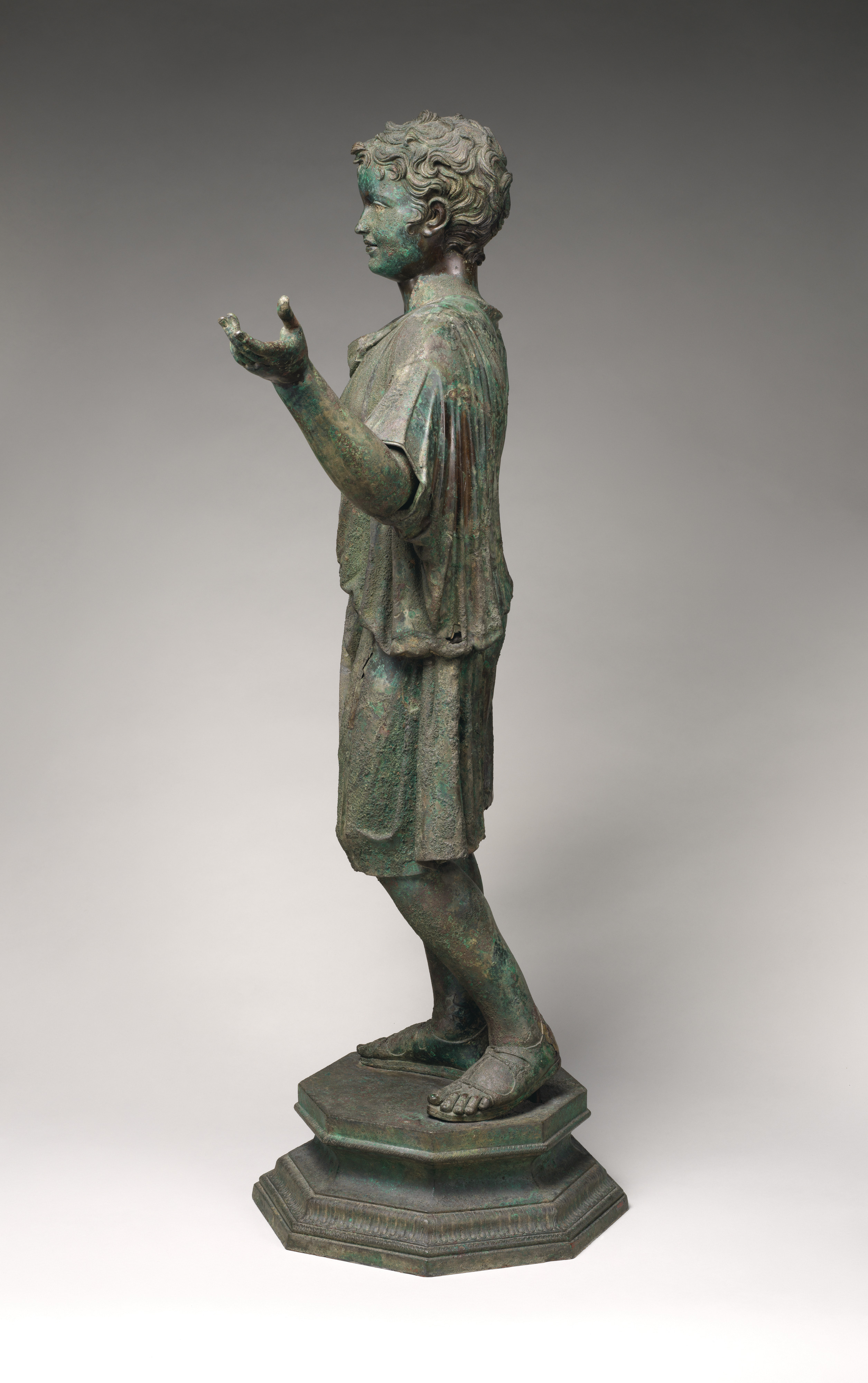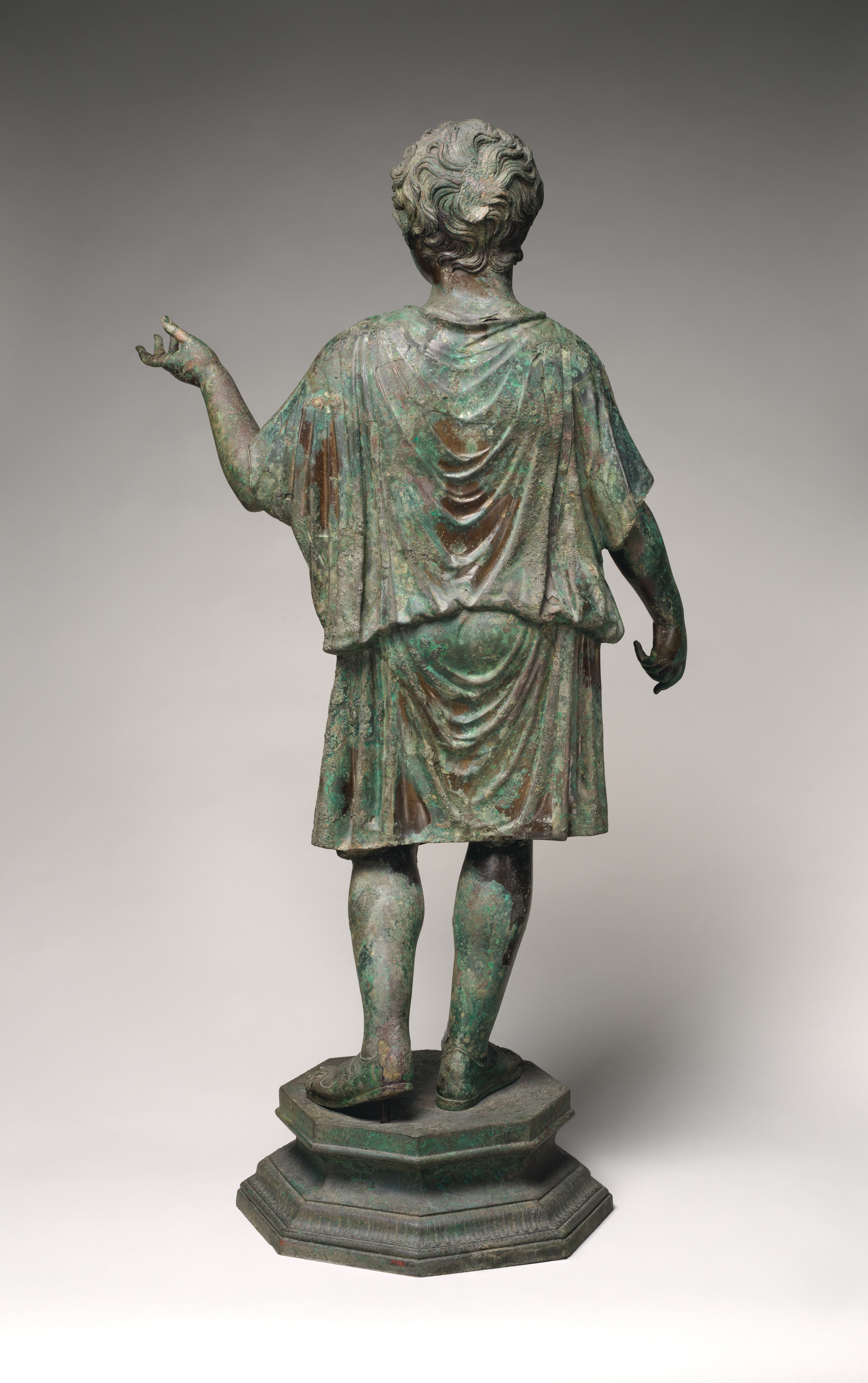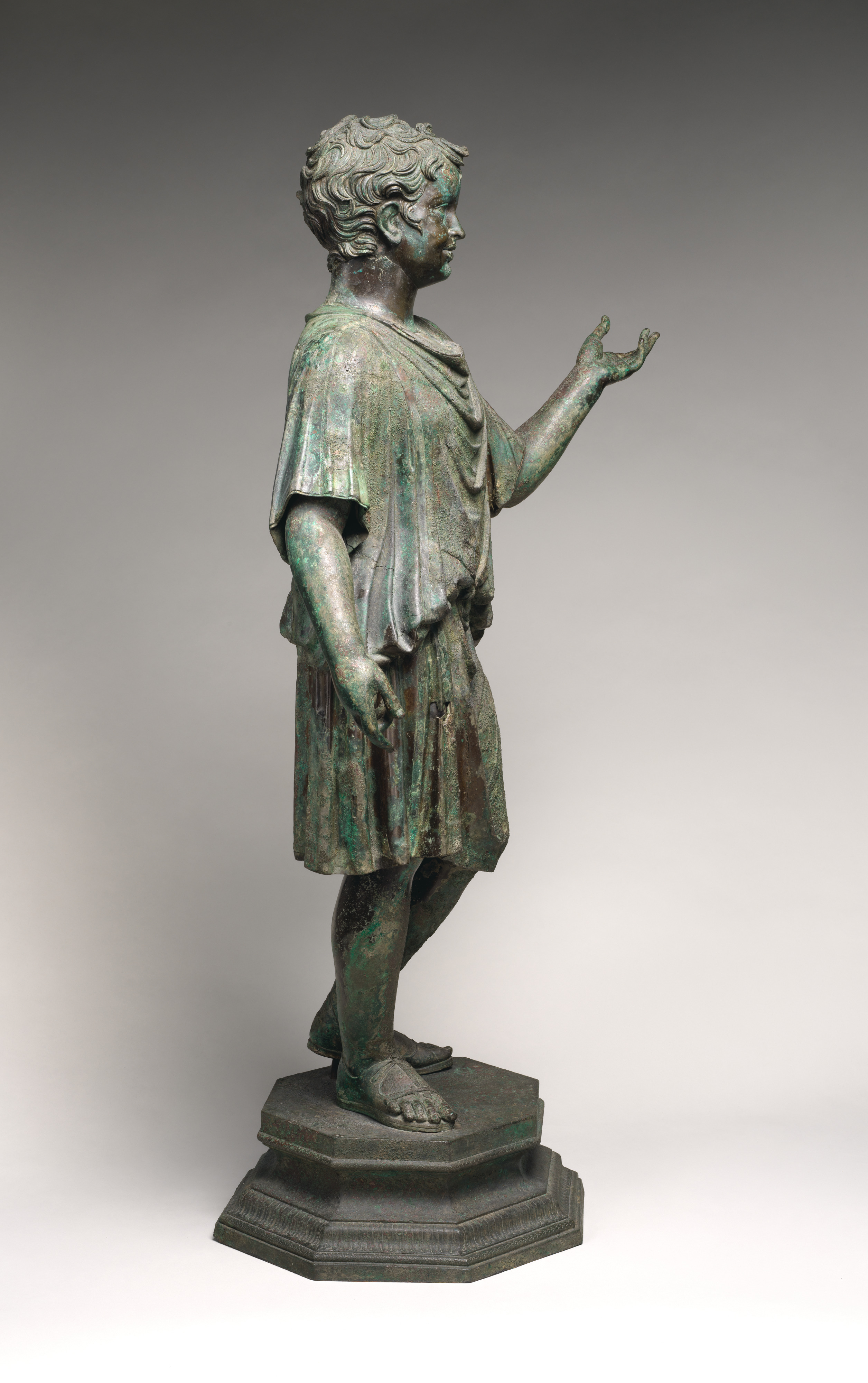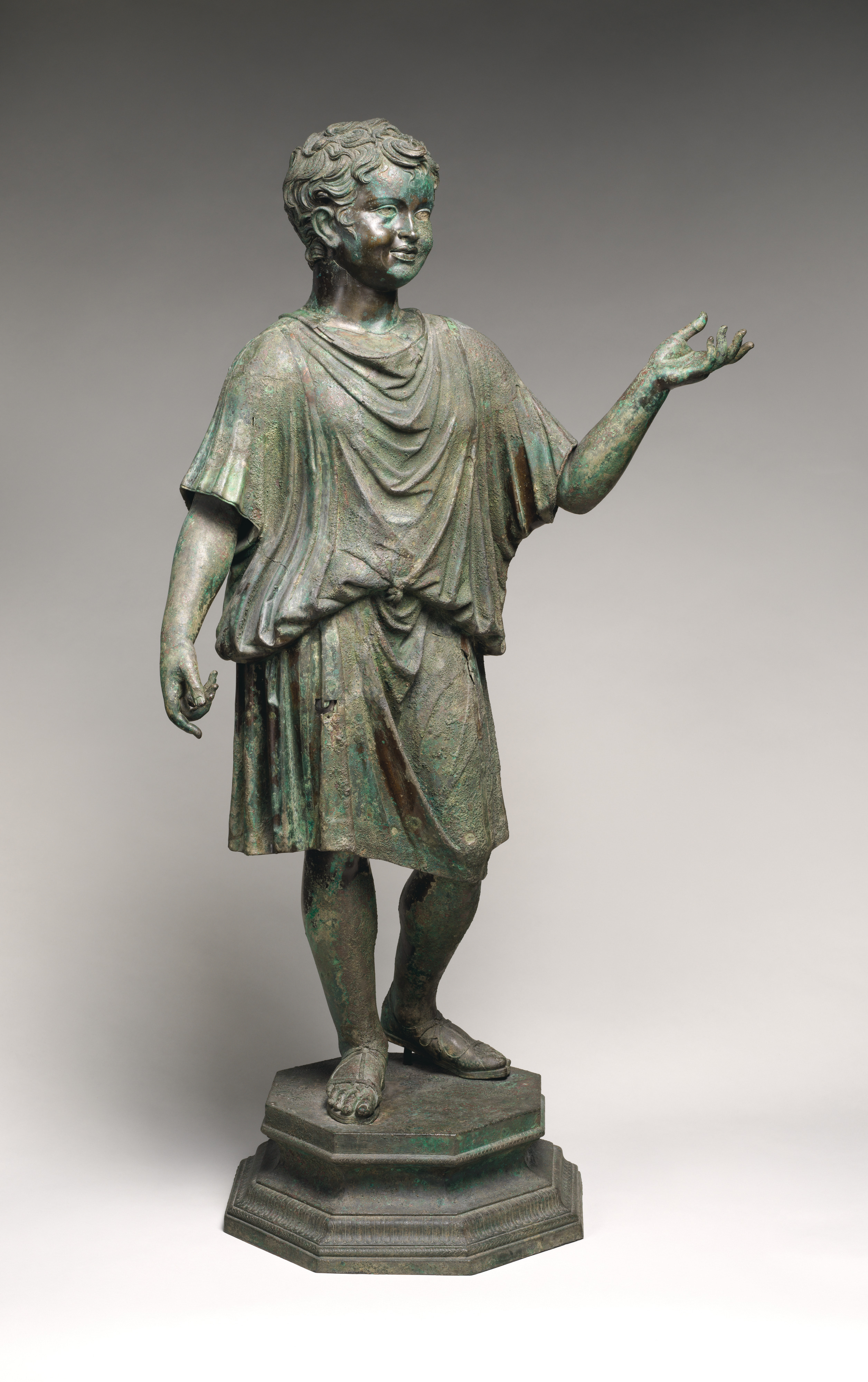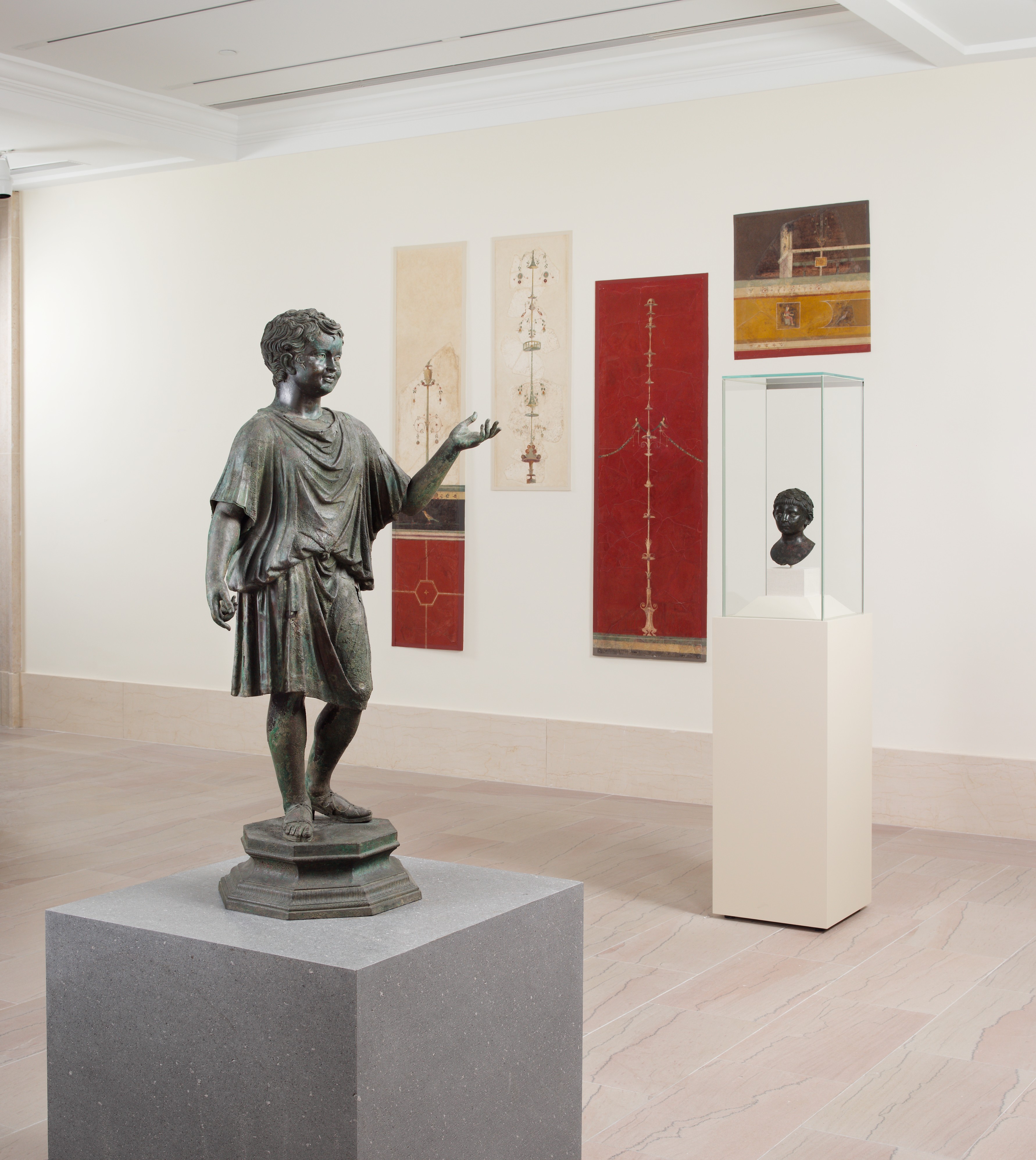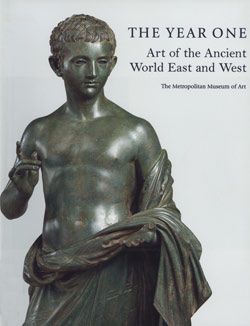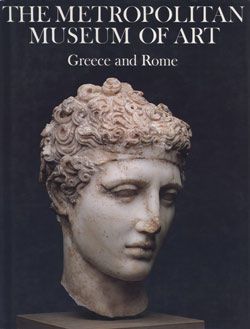Bronze statue of a camillus (acolyte)
As soon as he took power, the emperor Augustus set in motion a program aimed at restoring the time-honored values of virtue, honor, and piety. Religious cults were
revived, temples were built, public ceremonies and sacrifices filled the calendar. Men of every rank chose to be portrayed in the act of pious sacrifice. The popular type of sculpture seen here showed young boys who served as acolytes at religious ceremonies.
The identification of this figure as a camillus, an attendant at sacrifices who was chosen from the noblest families, is based on comparisons with other stages and reliefs, most notably those of the famous monument, the Ara Pacis of Augustus. According to Roman tradition, a camillus had to be below the age of puberty, and both parents must be alive. This statue may have been dedicated at a sanctuary by the boy’s parents, in recognition of his service to the gods. Alternatively, its refined decorative qualities may signal its use as an adornment within a religious precinct, for instance in a dining room for priests.
The figure’s eyes are inlaid with silver, the lips with copper, and the tunic with strips of copper to suggest woven or embroidered bands of color. He likely held ritual objects such as a container for incense in his left hand and a jug for wine or a ladle in his right.
#1226. Bronze statue of a camillus (acolyte)
This image cannot be enlarged, viewed at full screen, or downloaded.
This artwork is meant to be viewed from right to left. Scroll left to view more.



